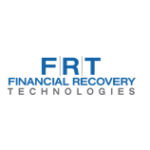Despite increased efforts by the SEC, institutional investors still hold the key in securities settlements
The Securities and Exchange Commission’s new secretary, Mary Jo White, is tightening the reigns and implementing stricter enforcement for securities cases. It’s an area that’s in need of reinforcement – particularly in the interest of shareholders. But even with more aggressive settlement tactics, investors and shareholders must remain vigilant in pursuing their own efforts to obtain rightful settlements for corporate misconduct and securities fraud.
 Between 2011 and 2012, SEC securities settlements grew from 670 to 714, a 6.6 percent increase representing the highest number of settlements in a fiscal year since 2007. That said, the median settlement amounts declined between fiscal year 2011 and fiscal year 2012, from $1.4 million to $1 million. As settlements are split among shareholders proportionate to their interests, this represents a drastic reduction in the amounts recoverable, on average, by shareholders reliant on the SEC to pursue litigation. Again, individual settlements show more promise. Seemingly consistent with the SEC’s emphasis on individual accountability, the median settlement amount more than doubled from 2009 to 2012, from $103,000 to $221,000.
Between 2011 and 2012, SEC securities settlements grew from 670 to 714, a 6.6 percent increase representing the highest number of settlements in a fiscal year since 2007. That said, the median settlement amounts declined between fiscal year 2011 and fiscal year 2012, from $1.4 million to $1 million. As settlements are split among shareholders proportionate to their interests, this represents a drastic reduction in the amounts recoverable, on average, by shareholders reliant on the SEC to pursue litigation. Again, individual settlements show more promise. Seemingly consistent with the SEC’s emphasis on individual accountability, the median settlement amount more than doubled from 2009 to 2012, from $103,000 to $221,000.
When a public pension fund or labor union fund serves as lead plaintiff in class-action securities cases, there’s a clear trend of higher settlements. Additionally, SEC settlement decisions are subject to judicial review. In some cases, this proves beneficial to investors should a judge reject a proposed SEC settlement in the interest of shareholders who could be subject to substantial losses based on the proposed settlement amount.
Despite the increased actions by the SEC and the possibility – not guaranteed – that the judicial system may act in the best interest of shareholders, the more-aggressive approach is still too new to predict the significance of the impact on investors. Because, historically, SEC sanctions have been inadequate in protecting shareholder assets, it’s in the best interest of investors to continue taking securities litigation into their own hands. Without proactive measures like securities class action monitoring, opportunities to participate in, initiate filings or opt out of group actions may be missed – and therefore opportunities to recoup losses.





